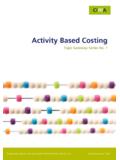Transcription of Implications of COVID-19 for Low-cost Private Schools - UNICEF
1 1 Implications of COVID-19 for Low-cost Private SchoolsAndaleeb Alam and Priyamvada Tiwari, UNICEFS ynopsis COVID-19 has hit Low-cost Private Schools (LCPS) especially hard. The economic shock of the pandem-ic has placed LCPS under significant financial stress; teachers reported losing their jobs, having their salaries cut, or not being paid at all. Thousands of LCPS have already shut down, and thousands more are on the brink of permanent closures. LCPS also struggled to provide remote learning support to their students, and the likelihood of extensive learning losses among returning students is high. Given the financial pressures they are under, LCPS will also face difficulties in providing remedial learning support to overcome this learning loss. These education market disruptions pose significant risks to the effective continuity of learning for millions of learners, especially those from households at the bottom of the pyramid, who are more likely to attend LCPS than high-fee Private Schools .
2 Evidence from past crises and recent reports strongly suggests that Private school enrolments will decline substantially, with some students mi-grating to public Schools , and others delaying entry or dropping out. The migration from Private to public Schools will also put a significant strain on the existing capacity in public Schools . A number of underlying factors make LCPS highly vulnerable to shocks. With some exceptions, LCPS are not included in governmental crisis response measures, or only a select few are able to benefit. The LCPS operating model also does not lend itself to resilience to shocks. Their heavy reliance on school fees, lack of diversified sources of finance, and limited access to external finance, therefore put the viability of LCPS at risk in times of crisis. In addition, the regulatory environment related to credit access and formal registration and/or accreditation represents barriers for LCPS to access support during crises and to make quality have the duty to ensure that all children receive quality education, not just those in public Schools .
3 In the short term, education policy response must therefore ensure that all students who attended Private Schools before COVID-19 also return to school and continue their education. However, short-term relief will not solve the underlying issues that make LCPS vulnerable to shocks in the first place. This means that in the medium term, `building back better needs to address resilience, quality and governance also in the Private education brief no. 8 | March 2021 Office of global Insight and Policy21. Context At the peak of the COVID-19 pandemic, school clo-sures disrupted the education of approximately billion students in over 190 countries 1 in 4 of whom were enrolled in Private Ensuring that all students return to school poses a challenge. In June 2020, the World Bank had forecast that COVID-19 would increase the out-of-school rate by 2 per cent although actual numbers could be higher as economic growth has been lower than assumed in the World Bank forecast.
4 A more recent survey in Ethiopia, India, Nigeria and Pakistan shows that 4 per cent of girls and 6 per cent of boys say they are unlikely to return to has hit Private Schools especially hard, and poses a risk to the continuity of learning for mil-lions of children, especially those from households at the bottom of the pyramid, who are more likely to attend Low-cost Private Schools (LCPS) than high-fee Private Schools . Governments have stewardship of the whole education system, not just public Schools ; therefore, any public policy that does not mitigate against COVID-induced risks to Private provision will be incomplete. This brief gives an overview of the scope of this education market disruption, par-ticularly its Implications for learners and teachers in LCPS and the spillover effects on public Schools , as well as the factors that affect the resilience of LCPS to shocks.
5 Hence, the brief does not address wheth-er Private Schools are good or bad, or if they produce more or less learning a topic that much has been written about already. 2. What are Low-cost Private Schools ?Defining Private Schools is not straightforward; UNESCO defines them as any school that is not operated by the government but is controlled and managed, whether for profit or not, by a Private body ( community, foundation, faith-based or-ganization, NGO, Private proprietor or Private enter-prise). Other terms for Private Schools are non-state, non-government, and non-public. The difference in the UNESCO definition between public and Private is based on management arrangements. If we super-impose the financing lens, we can see that it is more suitable to characterize Schools along a continuum than a dichotomy (Figure 1). Some faith Schools , for example, receive both state and non-state funding.
6 Many government-aided Schools , restricted from charging tuition fees, levy other user charges ( registration fees, exam fees). In addition, some Low-cost Private Schools are backed by corporate inter-ests, but are distinct from the average LCPS in their business model, access to resources, technology use, and political diversity also makes the task of precisely de-fining LCPS (also called low-fee, affordable or bud-get Private Schools ) much harder. For instance, an early definition of LCPS was a Private unaid-ed school, financed entirely by tuition fees, with a monthly tuition fee at the primary level not ex-ceeding the daily wage of a labourer. However, in practice, Schools that charge up to 15 per cent of household income in fees are called LCPS. Yet other studies have defined LCPS more loosely, making no reference to the cost but instead as a privately run school that is not solely dependent FIGURE 1: PUBLIC- Private CONTINUUM Sate financing State provision No fee State financing Non-state non-profit provision No fee State financing Non-state for-profit provision No fee Non-state financing Non-state non-profit provision No fee Non-state financing and provision (for-profit/impact first) Low fee Non-state investment and provision (for-profit/finance first) Market return feeSource: Steer et al.
7 (2015)3on government financing, and is able to, or plans to, become self-sustaining in the future. Since no single definition is applied consistently across dif-ferent studies, to the extent possible, we try to fo-cus on the subset of fee-charging Private Schools that serve (or claim to serve) inclusive markets, not including corporate-backed chains, which consti-tute a very small segment of the LCPS landscape. 3. What is the scope of COVID-19 impacts on Private Schools , especially LCPS?Who are the most affected learners?The share of Private school enrolment has risen rapidly in the past two decades, from per cent (184 million learners) in 2000 to per cent (380 million learners) in Actual estimates are likely to be higher due to undercounting of unregistered Private Schools . However, there are disparities in pri-vate enrolment across education levels and regions (Figure 2), which suggests that the impact of COVID-19 disruptions are unequally distributed.
8 For instance, impacts would likely be deeper in many countries of South Asia, and sub-Saharan Africa where Private en-rolment is high, and where there is a significant num-ber of Private Schools which are unaided or Cross-country differences in the size of the Private school market and the duration of school closures during COVID-19 also meant that globally, a higher share of Private school compared to public school students experienced longer school interruptions. Based on UNESCO data, an estimated 49 per cent of Private school students worldwide were affected by full school closures exceeding six months compared to 31 per cent of public school students. Meanwhile, 23 per cent of Private and 28 per cent of public school students were affected by full school closures be-tween three and six months, and 25 per cent of pri-vate and 33 per cent of public school students by full school closures of less than three Further, given that compared to rural areas a higher share of learners in urban areas are in Private Schools , the impact of the education market disruption would be more severe in urban areas.
9 In India, for exam-ple, 73 per cent of students in urban areas compared to 35 per cent in rural areas are in Private Schools , with the majority of these enrolled in unaided Private Schools . In Punjab, Pakistan, 53 per cent of learners in urban settings are in Private Schools compared to 30 per cent in rural In Lagos State, Nigeria, which is predominantly urban, 39 per cent of primary enrolment was in public Schools , 25 per cent in reg-istered Private Schools and the remaining 37 per cent in unregistered Private Schools . Combined with more severe impacts of COVID-19 on urban households, children in non-rural areas will be more deeply affect-ed by this education market , there are differences in Private school en-rolment between the affluent and the non-affluent. Though Private Schools do not cater to the poor in the same proportion as public Schools , as seen in Figure 3a, in some countries ( Bangladesh, DR Congo, Guinea-Bissau, Pakistan), Private Schools still serve a significant share of students from poor and vulnerable households in the bottom two wealth quintiles,6 particularly the urban poor and vulnerable (Figure 3b).
10 These learners are more likely to be en-rolled in LCPS than in high-fee Private Schools . 020%40%60%WorldArab StatesCentral andEastern EuropeCentral AsiaEast Asia andthe PacificLatin Americaand theCaribbeanNorth Americaand WesternEuropeSouth and WestAsiaSub-SaharanAfricaPre-primaryPrim arySecondaryFIGURE 2: PRIVAT E ENROLMENT R AT ESource: UNESCO UIS. 2019 estimates4As it is not possible to identify the share of poor and vul-nerable learners in fee-charging Private Schools from household survey data, Figure 3 presents upper and lower bound estimates: the upper bound corresponds to the broad UNESCO definition of Private Schools , whereas the lower bound corresponds to the narrow category of Private Schools run by Private proprietors. Reports from multiple countries show that not all non-state Schools run by communities, faith organiza-tions, or NGOs are (fully) government-aided, and (part-ly) rely on other funding sources for their operations, including user charges and community contributions, which would have been affected by , the bottom 40 per cent are not the only ones vulnerable to COVID-19 impacts.















